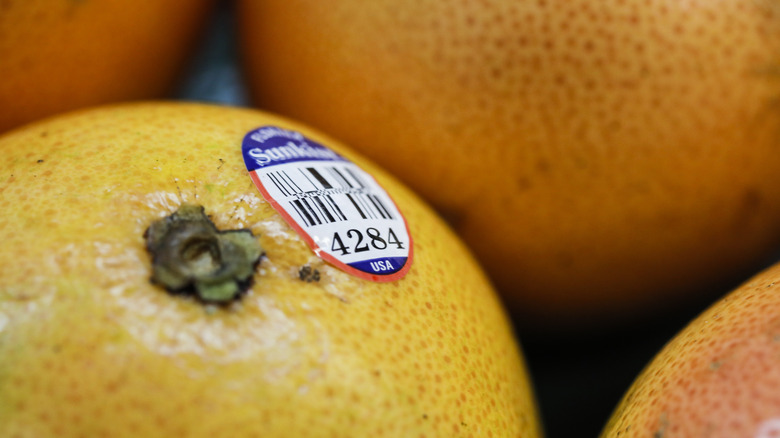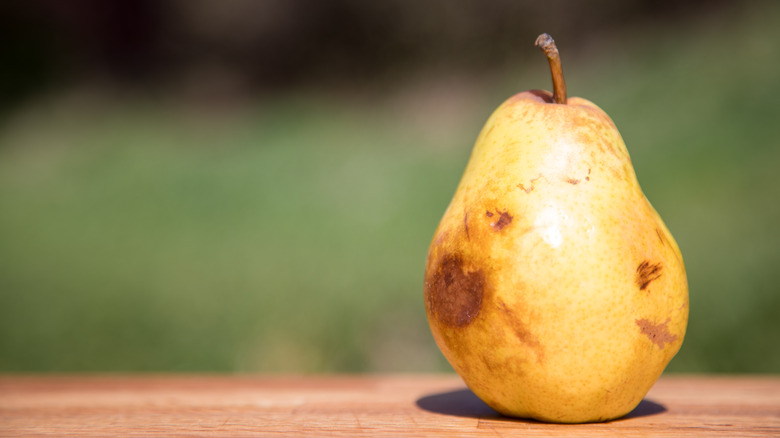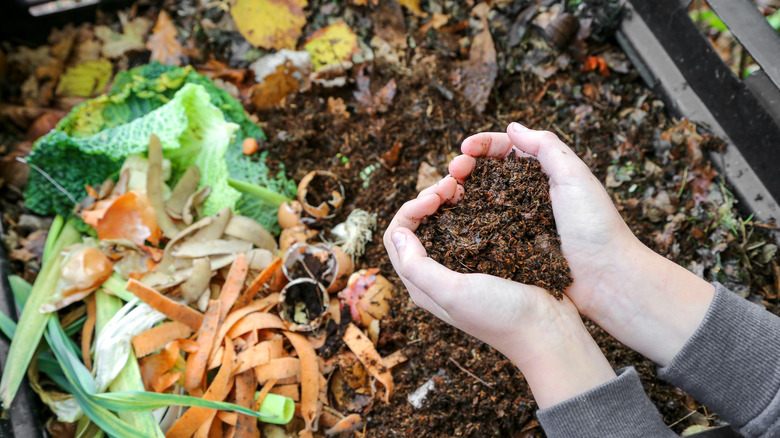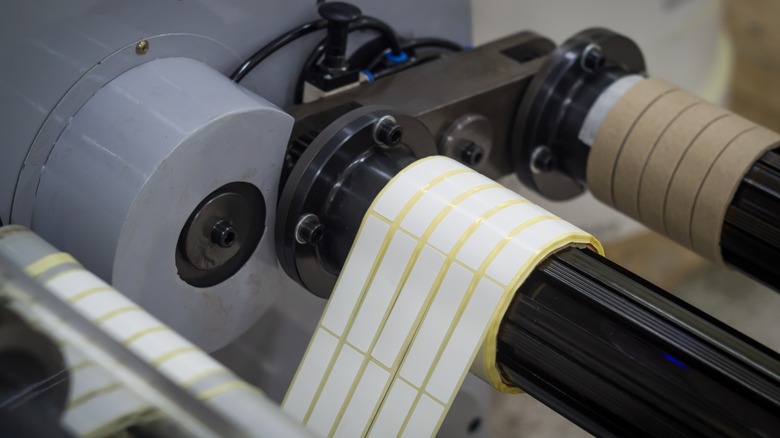Why You Need To Be Careful Peeling Off The Stickers On Your Fruit
If you shop at a standard supermarket, your haul of juicy and delicious fruits will all share a common ornament: The dreaded fruit sticker. Whether you're loading up on apples for baking or just buying some fresh oranges for the week, you'll notice those ubiquitous stickers. These small pieces of plastic are glued to individual pieces of fruit and contain a price lookup code (PLU) that identifies that specific type of fruit during checkout. While handy tools for a complex supply chain, fruit stickers are a pain to deal with at home.
It might be tempting to peel off these pesky stickers as you unload the fruits. At best, they're a bit of an eyesore in your fruit bowl and at worst can be accidentally consumed the next time you reach for a crunchy apple. However, it's best to leave the stickers alone until you're ready to actually eat the piece of fruit. As anyone who's tried knows, removing the gluey stickers often removes a bit of fruit skin as well. This blemish might look minor, but given time it will lead to browning and speed up the rotting process.
Chemical reactions lead to bruising
When you break a fruit skin while attempting to peel off the sticker, you set off a chemical reaction that drastically speeds up fruit decomposition. According to Scientific American, fruit browning is the result of a mixture of polyphenol oxidase (PPO) and oxygen. When exposed to oxygen, PPO turns various phenolic compounds into melanin, the same substance that adds color to hair and skin. When you peel a bit of skin off with the sticker, "cells break open and the phenolic compounds and the enzyme are released and mix with oxygen in the air." This combination releases melanin and results in almost immediate browning and discoloration of the affected area.
While there are some fruits genetically modified to never bruise, most pieces you encounter will develop some level of browning. Luckily, browned fruit is perfectly safe to eat and is mostly an aesthetic consideration. However, bruised areas usually have a mushy texture, which is typically the last thing you want when chomping into a crisp apple or firm banana. While not an immediate concern, the soft, moist tissue of a bruised area can eventually foster mold and bacteria growth.
It's important to eventually remove the stickers
If you do have the misfortune of accidentally consuming one of these ubiquitous stickers, there is a bit of a silver lining: Fruit stickers are edible. In an interview with the New York Times, the FDA shared that "occasional, unintentional consumption of a sticker would not be expected to be a health concern." They don't have any nutrients and will simply be passed through your digestive system.
Aside from avoiding inadvertent consumption, you should always remove fruit stickers because they aren't biodegradable. Stickers — which are typically made up of ink, plastic, and glue — won't break down in a natural environment. If you add a banana or orange peel to a compost pile and don't remove that sticker, you'll end up with a barrel full of soil and the plastic remnants of those stickers. The stickers shed microplastics, which can contaminate your composting bin and leech toxins into your soil. So, remember to throw stickers in the garbage instead of the recycling or compost bin after carefully removing it.
The future of PLU stickers
Because PLU stickers are non-biodegradable and non-compostable, what you do with them can impact the world around you. Instead of throwing them straight into the garbage, consider repurposing them by turning them into art collages or using them as an alternative for tape and other adhesives.
Unfortunately, beyond repurposing them, there aren't many solutions for reducing the environmental impact of non-biodegradable PLU stickers, and relying on individual action isn't always enough. However, the U.S. Department of Agriculture's Agriculture Research Service has launched an initiative to manage excess waste related to PLU stickers by developing compostable food-grade adhesives for fruits and vegetables. The department says these eco-friendly stickers "can then go directly into a compost bin saving time and energy for the consumer who will not need to remove the sticker prior to peeling the product," adding that, "this practice will also reduce the burden on landfills." Some alternative adhesives include plant-based materials derived from fatty oils, proteins, and starches, making accidental consumption of the stickers even safer while reducing potential damage to your produce after removal.
The USDA initiative launched in 2021 and is expected to be completed by 2025. Next time you see a PLU sticker on your produce, remember that it's more than just a price tag.



